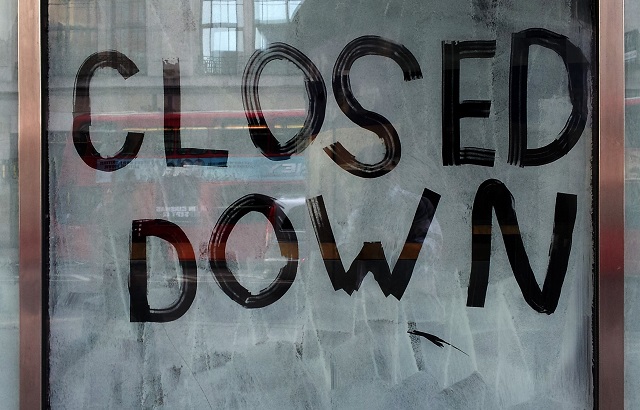Financial advisory firms have been hit left and right by higher levies and rising professional indemnity insurance costs.
Especially those offering defined benefit (DB) pension transfers.
And it’s a sad reality that not all of them manage to stay afloat.
In the last three months, the Financial Services Compensation Scheme (FSCS) has declared around 40 firms in default.
But what actually happens when a financial advice business becomes insolvent?
The experts step in
To better understand the processes, International Adviser spoke with Adam Stephens, partner at Smith & Williamson, which has often acted as the administrator for advisory firms in default.
“Very few people like to recognise that they or their business are insolvent,” Stephens said. “So, the first hurdle we face is becoming involved.”
It’s usually the firm’s accountants, lawyers or even a regulatory body that requests an administrator step in.
“The reason they have contacted us is because professionals will have taken the view that the company has become insolvent or is about to.”
Unable to pay
There are usually three types of insolvency, Stephens explained.
- Balance sheet – where a company’s assets are less than its liabilities;
- Cash flow – where a company can’t pay its creditors in full and on time; and,
- Company voluntary arrangement – where a firm reaches a compromise with its creditors.
An example of the last scenario could be where legacy issues have created large debts, making it impossible for the company to satisfy all claims.
“But there could still be an underlying level of good business,” he said.
Try to save the firm first
Administrators avoid invoking insolvency unnecessarily and will take any other options available beforehand.
“To begin with, we will look to see if there is a route to restructure the business. That might be by finding a new funder. It might be by undertaking an operational restructuring, either by letting some staff go, changing some contracts or focusing on marketing to new clients.”
While they would seek to avoid insolvency in the first instance, “sometimes there’s not enough time, though, to do any of those things, or it is not practicable or it’s just not appropriate”.
For sale
That is when the administrator would look to sell the firm “to somebody who has got the financial capacity and approvals to carry on running it”, Stephens added.
“We would advertise the company for sale in various relevant newspapers and online journals.
“The length of that process depends on how much cash there is and the position of the Financial Conduct Authority (FCA) as well, which may take a decision to revoke its regulatory permissions, or reduce them, or impose conditions or restrict the period of time to run that marketing campaign.
“During the accelerated process, we talk to people, set deadlines for prospective buyers to come up with offers. We will also get them to sign a nondisclosure agreement, discuss the amount of money they are willing to pay, and whether they have the financial, regulatory and operational resources to take on the business.
“Because the FCA will often have a role in that sales process, the successor will have to be appropriately FCA authorised and regulated, so the FCA has a very important role in this.”
Stakeholder involvement is crucial
And there may be more than one watchdog interested in the outcome, such as the FSCS, the Prudential Regulation Authority and the Pensions Regulator.
“It’s very important throughout this process to involve the regulators, so that they know what’s going on.
“And, hopefully, the marketing process will bring some offers and you can therefore choose the highest so that it returns the most back to creditors.
“This may be done prior to invoking an administration or liquidation or another form of insolvency, and you might do that to preserve the regulatory and contractual permissions.”
As some cease on insolvency, it may make sense to transfer the contractual permissions before it is invoked.
“But there are risks associated with that,” Stephens added. “If you have a choice, you may choose to do it after invoking insolvency, in what’s called the pre-pack administration.”
This is very common in the financial services sector, especially in cases where money is tight. As a result, a firm might invoke insolvency much earlier, go into administration and, only after that, would it start the marketing and sales processes.
Client protection takes centre stage
Regulators are not the only parties that have to be constantly informed, as clients also need to be kept in the loop.
“That means keeping them involved in the process, where appropriate, and reassuring them as much as you can do that their money is safe,” Stephens said.
“That doesn’t mean you necessarily write ‘your money is safe’ in all your communications, but it does mean that you keep the FCA and clients involved as much as you can and follow that spirit of treating customers fairly.”
Failed sale
But what happens if the company cannot be sold, or the offers are not high enough?
“The first thing you would seek to do is a piecemeal sale, which means trying to sell the business in parts to multiple different people.
“That clearly is much more complex, costly, and you may still be left with the parts you haven’t been able to sell,” Stephens admitted.
And if that fails, there’s only one option left for the firm: winding up.
Can the money be returned?
Stephens said that, in many cases, the administrator will try to give monies and assets back to the clients.
“[But] both of those are very costly. This is generally done via a separate insolvency process called special administration.
“It’s specific to the financial services industry and was developed out of the Lehman Bank situation where there were an awful lot of client money and asset claims.
“There have only been a handful, and those are not ideal, and we seek to try not to do that.
“In these insolvencies, claimants may be able to claim against the FSCS, which is funded by the industry.”
Glimmer of hope
He added: “The FSCS won’t simply grant access immediately; they have to go through a due diligence process, which involves liaising with us.
“Obviously, there are other regulators and public bodies involved, and we liaise with them.”
Clients filing claims with the FSCS can receive up to £85,000 ($102,937, €92,709), but it will depend on the different caps related to what a client is claiming for.
This also means that, in many cases, the FSCS becomes the largest creditor.
Not an easy road
Stephens said that administration process is long and complicated, and takes time to come to a conclusion.
When an administrator is appointed, it becomes the executive director of the company, and the previous directors lose their powers.
Pay-outs could take years, as administrators need to go through all the relevant processes from insolvency to marketing and sale.
This is very much the case if third-parties are also involved.
“For instance, if the business has been mismanaged and there are misfeasance-related claims [failing to discharge legal obligations] that could potentially be against the directors – but is not limited to against them, it could be against auditors and the professionals involved and other third-parties.
“[Then], you seek to get them to write a cheque, so to speak, for the loss that they have been complicit in creating.
“That happens over the course of a year, or years, because nobody likes to write a cheque out unless they really have to,” Stephens said.
What happens afterwards?
When as much of the money has been recovered as possible, the administrator starts paying creditors.
“Once the business has been sold or shut down, and we’ve concluded our investigations and recovered any money, then our job then is to adjudicate claims.”
The administrators costs are deducted first and then other parties are paid in a specific order.
At the top of the list are secured creditors, “followed by preferential creditors, which mainly consists of employees, and then unsecured creditors, which would include claims for compensation”.
Finally compensated
But how much can people get back?
“The range is as broad as it can be from 0% to 100%, albeit 100% is very rare,” Stephens said.
It was, however, the case for some clients in the Lehman insolvency.
But creditors need to be mindful that they cannot claim money from both the administrator and the FSCS.
Stephens said that, if that happens, the lifeboat scheme would deduct any sum that was already paid back by the company.
If a client has already received the maximum compensation by the FSCS, however, and more monies come in, then part of it could be given back to the client, but that is a rare occurrence.








